The mass use of FPV drones in hostilities between Ukrainian and Russian forces has radically changed the pattern of modern war.
Successful use of one or more cheap drones makes it possible to destroy equipment worth millions of dollars.
Numerous videos of combat use of such drones on the frontlines are evidence of this assertion.
Let’s see what the peculiarities of FPV drones are and their combat capabilities to defeat equipment and manpower.
FPV drones are called so because they are controlled due to the “first-person view” function. This is a real-time video transfer function from the camera installed at the front of the UAV. The operator controls the drone with a remote control and sees the area around the drone in real time due to special glasses, as if it were sitting inside the drone itself, similar to a pilot.
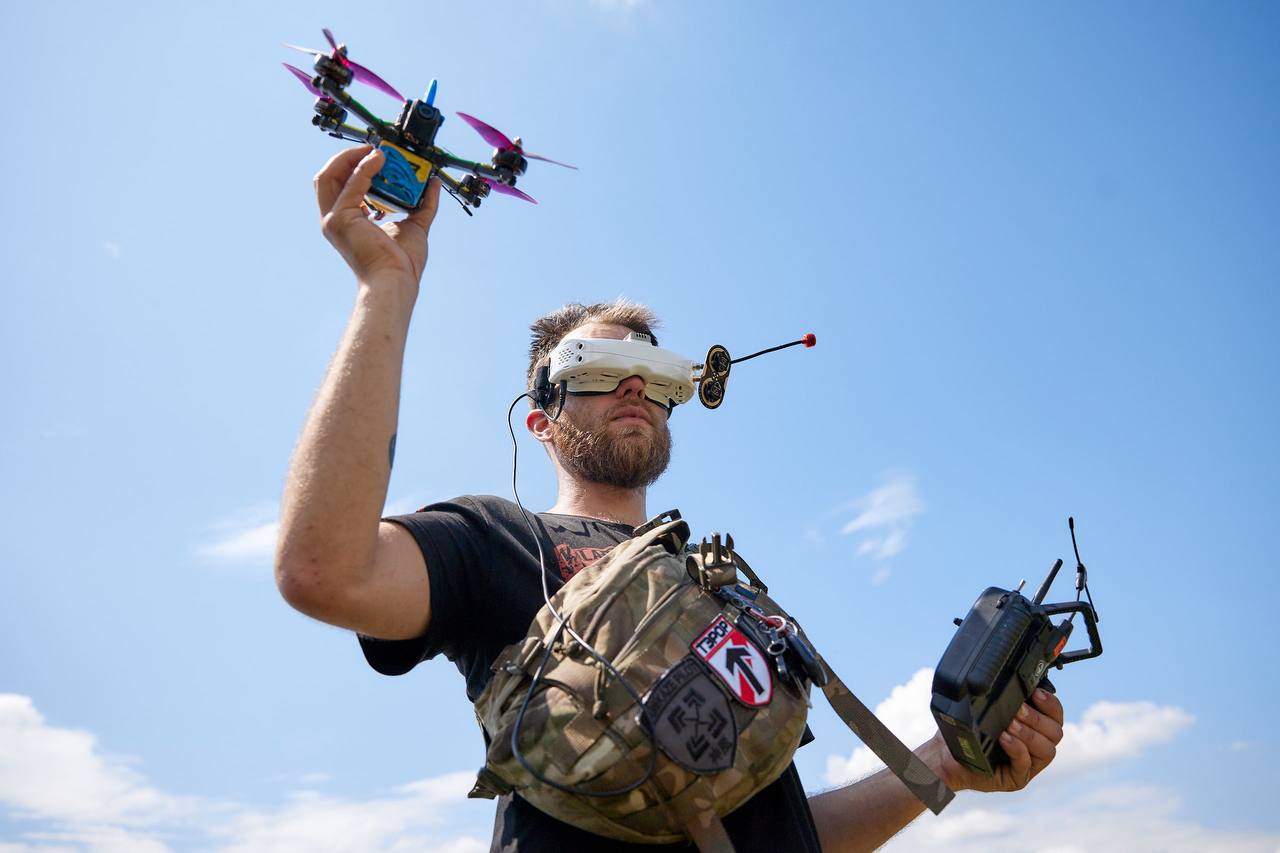
This is not military equipment. Such drones in civilian life are used for entertainment, for example, in sports races. They can carry payloads, but at the same time, FPV drones do not have autopilot and fly without GPS.
Drones show exceptional maneuverability and are able to quickly change direction. This requires the operator to have strong skills and training levels because he has to manually control all flight processes. Drone’s characteristics depend on the specific model. Such drones are capable of reaching speeds of more than 100 kilometers per hour or even more.
Though, in the Russian-Ukrainian war, the definition of FPV drones can be expanded: high-speed quadcopters controlled by a special headset.

The military uses FPV drones as kamikaze drones, installing various warheads on them. One more use case is dropping munition on the enemy with the help of an FPV drone, after which the drone returns. Such drones are actively used during Russia’s war against Ukraine. In the right hands, FPV kamikaze drones are precision weapons that are capable of striking various armored vehicles and destroying enemy manpower.
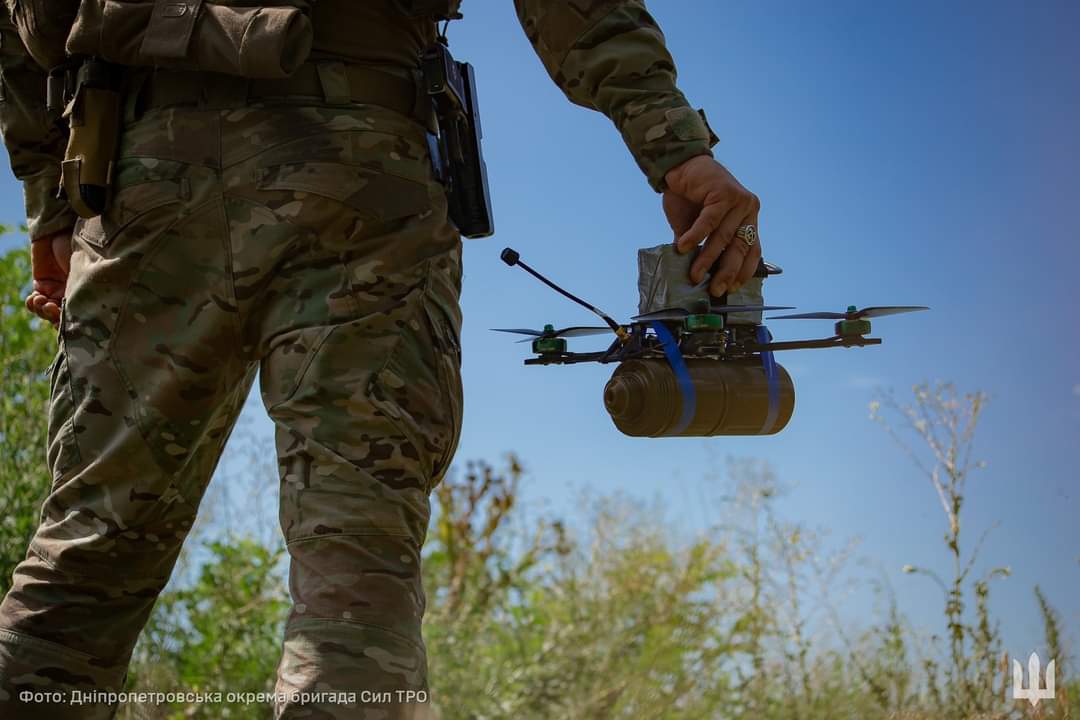
Drones can carry ammunition of different types and varied weights, fly into trenches and windows of buildings, and in addition, they are capable of falling into hatches and doors of enemy equipment. Such drones make it possible to strike enemy targets at distances of up to 10 and possibly more kilometers.
The Ukrainian military has been actively using FPV drones almost from the very beginning of a Russian full-scale invasion. These drones are operated by various units of the Armed Forces of Ukraine: the National Guard, the Security Services, the Special Operations Forces, the Defense Intelligence, etc. Usually, the military operates in small groups, consisting of operators and their assistants. Sometimes FPV kamikaze drones or drones with an ejection function act in tandem with reconnaissance copters. This provides greater application efficiency and situational awareness for operators.

In 2022, various volunteer initiatives in Ukraine began to massively assemble and purchase ready-made drones for the needs of the military, and then private enterprises joined this process.

At the frontlines, drones with high accuracy fly into enemy dugouts, hatches of tanks, armored vehicles, and cars.
One of the great advantages of FPV drones is their price and high accuracy of application. The best models cost half the price of the usual Mavic quadcopter. For example, a drone worth up to $1000 is capable of carrying a charge, which, in case of a successful hit, can strike and even completely destroy the IFV or enemy tank worth several million.
Initially, Ukrainian volunteer groups and private manufacturers used components purchased mainly in China.
Now production has been put on stream, producing about thousands of FPV drones per month. Manufacturers are currently working to diversify the supply of spare parts and establish the production of individual components in Ukraine in order to be less dependent on the external market.
In July 2023, the Ministry of Defense of Ukraine reported that, starting in February 2022, 28 models of drones of various types from Ukrainian manufacturers were adopted or made operational.
“Among them, in particular, are 9 models of kamikaze drones, including 3 fixed-wing drones, as well as 6 models of FPV drones. The total number of UAVs and drones delivered to the Armed Forces of Ukraine as part of the procurement of the Ministry of Defense includes thousands of units,” the report said.
According to the Ministry, after simplifying the purchase procedure for manufacturers last autumn, the deadline for adopting new equipment was reduced from two years to several weeks.
Yaroslav Oliynyk, adviser to the Minister of Strategic Industries of Ukraine, said that three domestic state-owned companies have already begun production of FPV drones. He made this statement in August 2023, at the iForum conference.
He also stressed that the Ministry of Strategic Industries was working to improve the market for Ukrainian UAVs, looking for ways of partnering between state and private manufacturers. Moreover, the production of components in Ukraine is localized, and cooperation with international investors, funds, and manufacturers is carried out.
Militarnyi gives only a few examples of FPV drone projects implemented in Ukraine.
In September 2023, the Ministry of Defense allowed the domestic KH-S7 FPV drone to operate in the Armed Forces of Ukraine. The drone was designed to defeat a variety of mobile and stationary ground targets.
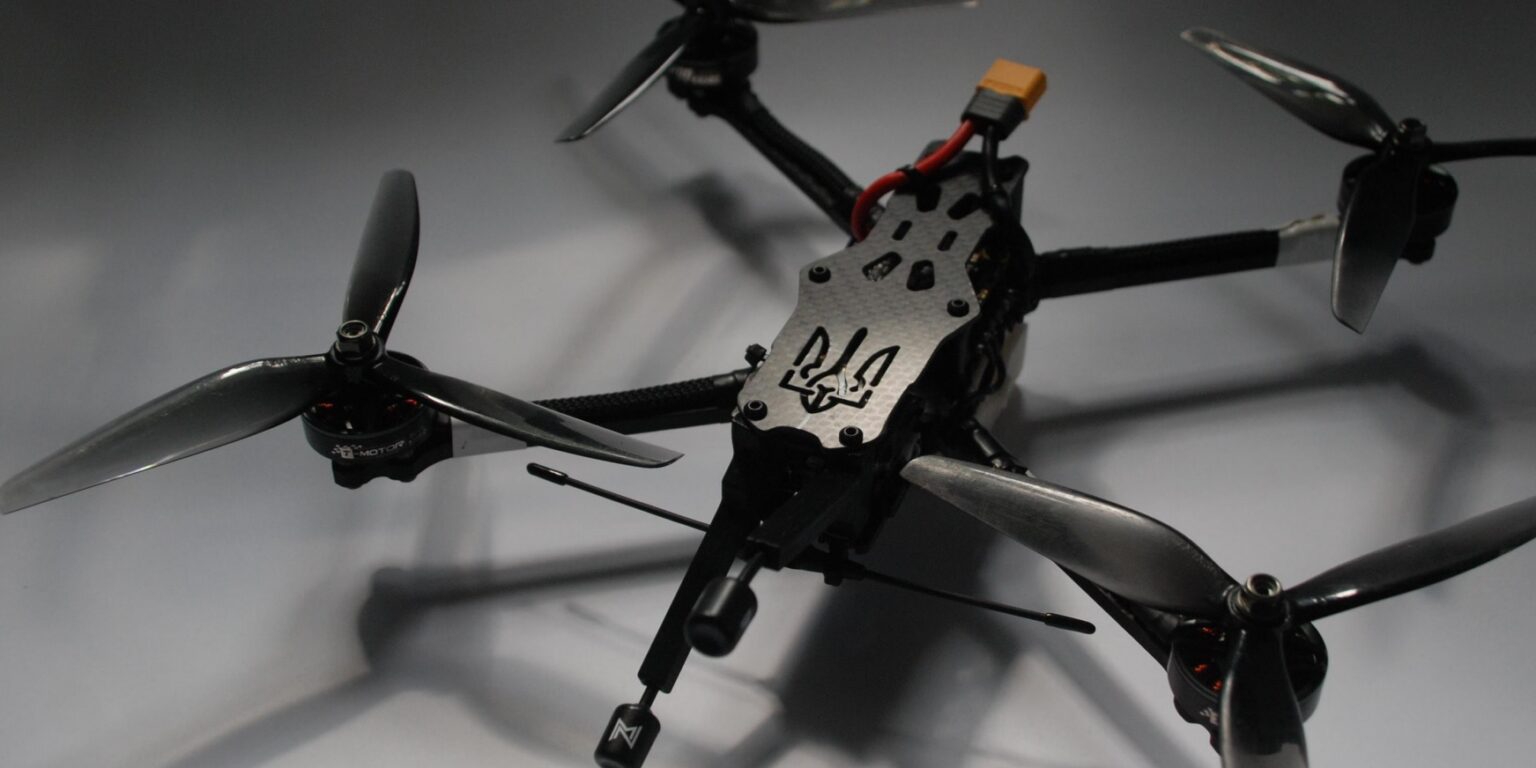
The drone began to be developed last summer. The team united like-minded people, including engineers and the military, who had been involved in the UAV subject for years as a hobby.

It is stated that the KH-S7 FPV drone normally carries a payload weight of 1 kilogram at a distance of 7 km. There is enough power for high performance, but more requirements are needed to ensure it. According to the developers, the Ukrainian military used this drone at a range of 9.5 kilometers. The manufacturer is now scaling up the production of drones to meet the existing needs of the Ukrainian army.
They are also working on self-guided FPV drones. In particular, AirUnit specialists work in this direction. The company explains that if there is such a system, the UAV operator will only need to lock on the target by selecting the object on the screen. The software will then come into play.

Such a system solves the problem of loss of communication and mishitting, which can happen during a dive on the target.
In Ukraine, they also develop and manufacture ammunition for dropping from FPV drones. In particular, volunteers from the Steel Hornets project created a special shrapnel munition with metal balls as striking elements, designed to defeat enemy manpower.
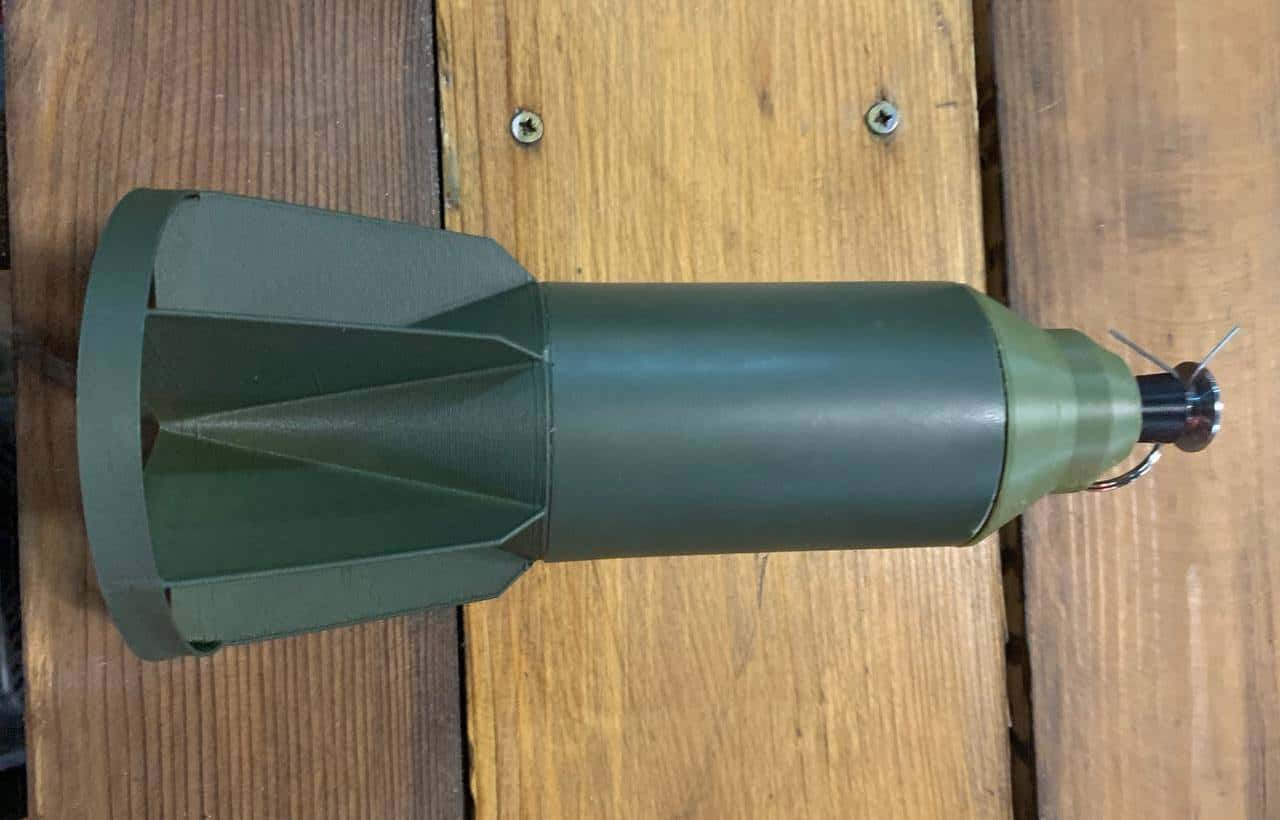
The shrapnel munition has a mechanical nose pin. The diameter of the case is 63 mm and the weight in a fully assembled form is 800 g.
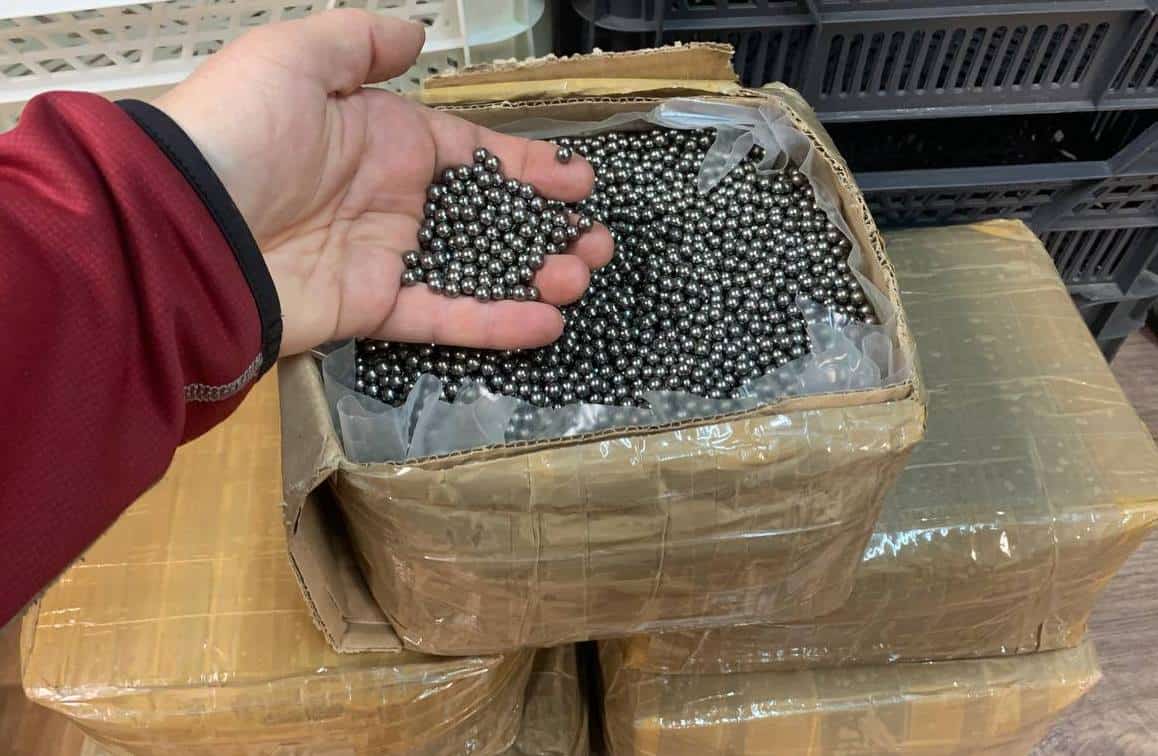
For airstrikes with new ammunition, UAV operators use the dive method. This approach makes it possible to use FPV drones several times in a row.
In October 2023, the Cabinet of Ministers of Ukraine admitted a decision that hugely simplified materials’ imports for the production of ammunition and UAVs warheads.

Before that, Ukraine officially brought drone ammunition into a separate category. Currently, Ukrainian drones use regular ammunition, adapted for dropping from reconnaissance UAVs/suspended under an FPV drone, as well as homemade products of questionable quality.
Ukrainian soldiers of the Defense Forces use FPV drones to destroy various military equipment and manpower in the Russian invaders’ army.
Let’s give just a few examples of strikes by these drones that led to the loss of power by the Russians.

In June, the Ukrainian military showed the use of FPV drones to destroy Russian universal minelayers (UMZ) installed on a ZIL-131V truck that were designed for remote setting of anti-tank, anti-personnel and mixed minefields.
In July, in the Bakhmut direction, an FPV drone under the control of the Security Services operator completely destroyed the TOS-1A Solntsepyok heavy flamethrower system (MRL).
The Ukranian military chose to strike the Pegas drone, which was purchased as part of the Army of Drones project at the expense of Everstake. The Pegas is made of cheap imported spare parts and equipped with a warhead. Such drones are transferred to many units of the Armed Forces and to the Security Service of Ukraine.
In the Luhansk region, the Ukrainian military hit the launcher of the Buk anti-aircraft missile system of the invaders with an FPV drone.
Soldiers of the Ukrainian ACHILLES Company of the 92nd Mechanized Brigade managed to hit the Russian air defense system.
Now the Ukrainian military is conducting an offensive operation near Bakhmut to surround the enemy forces and prevent the Russians from moving their units from here to the south.
To complete such tasks, FPV drones are actively used. They strike the cars and armored vehicles of Russian invaders. In this direction, in particular, the Defence Intelligence of Ukraine sent its kamikaze drone operators.
The Ukrainian military is also targeting Russian drone operators to eliminate them.
Recently, a strike FPV drone destroyed Russian UAV operators in the Kherson region. The drone hit the window of the apartment in a multi-storey building where the invaders were located.
As a result of the hit, a secondary detonation occurred in the building, which may be associated with the explosion of ammunition or enemy kamikaze drones prepared for launch. This was the combat mission of the Ukrainian FPV drone of the Lastivka unmanned aerial systems unit of the 11th Brigade of the National Guard of Ukraine.
The Ukrainian Defense Forces began using FPV drones with a warhead that strikes targets by airbursting a high-explosive or shrapnel warhead.

The published footage shows the use of a strike drone to eliminate five Russian soldiers who were hiding behind the burned BMD-2 hull.
After hearing the sound of a quadcopter, the invaders timely left the site of a potential hit, but instead of diving, the FPV drone detonated in the air directly above the Russians. Four of them were in the affected area and were probably injured.
Since the beginning of the mass use of FPV drones at the frontlines by the Ukrainian Defense Forces, the Russian Federation has lagged behind in this segment of UAVs.
However, later, the Russians managed to launch mass production of such drones. They injected in this production huge funds that the aggressor-state allocated for the military-industrial complex. Mass production of such drones began in the second half of 2023. Now the Russian invaders are capable of using thousands of FPV drones at the frontlines against Ukrainian defenders.
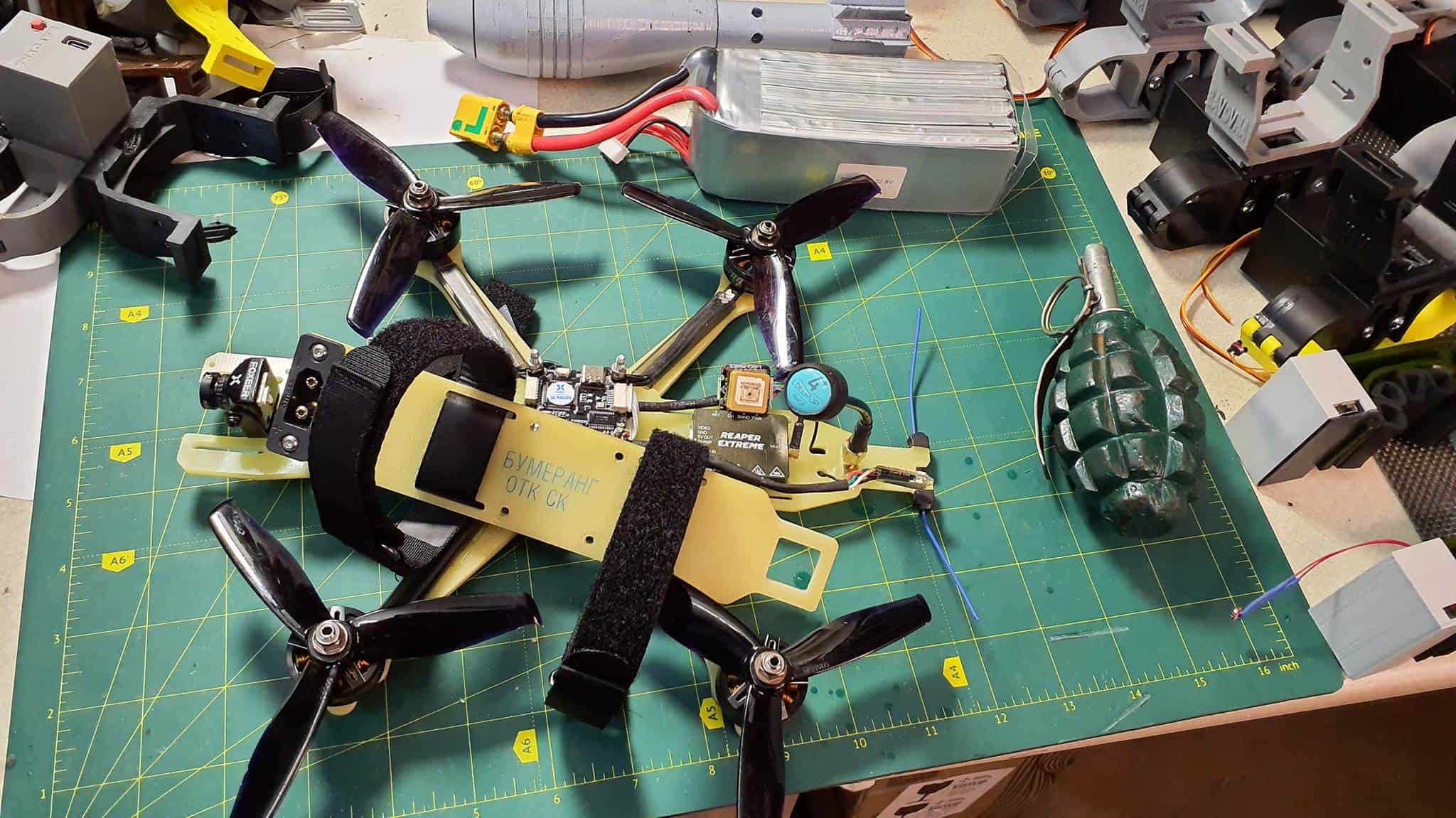
The Ukrainian military captured the mass-produced Russian Boomerang FPV kamikaze drone, which the Ministry of Defense of the Russian Federation presented on March 1, 2023.
This Russian drone is made of textolite. It has foreign-made parts. It has a battery, a Foxeer camera, a Reaper Extreme video transmitter, four F80 PRO KV1900 electric engines, an antenna, and a BetaFPV receiver.
The appearance of FPV-drones on the frontlines of the Russian-Ukrainian war, which perform various combat tasks, led to the development of this segment of aerial drones, which can affect equipment and manpower, both as kamikaze drones and reusable UAVs with a mechanism for dropping ammunition on the target.
They pose a great danger and make the military look for new approaches in the tactics of using units on the battlefield, new methods of protecting military equipment, and the development of small-sized EWs to protect a separate unit of equipment or trench from defeat by FPV drones.
The successful use of one or more such cheap drones leads to the reduction or disabling of any of the mentioned equipment, including the expensive military one. Thus, expenses on the production/purchase of FPV-UAV and time spent on their production are incomparable with the budgets and times spent on a new tank or IFV.
Підтримати нас можна через:
Приват: 5169 3351 0164 7408
PayPal - paypal@mil.in.ua
Стати нашим патроном за лінком ⬇
Subscribe to our newsletter
or on ours Telegram
Thank you!!
You are subscribed to our newsletter